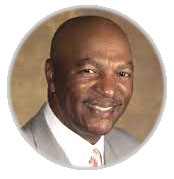
By Pete McDaniel
Freelance Writer
(August 25, 2019) Atlanta, Ga.—The refurbished homes along a threesome of thoroughfares (Memorial Drive, Alston Drive SE and Second Ave. SE), some of them with fancy stone facades that both reveal their rejuvenation and disguise their dark past, gives one the impression that the community surrounding famed East Lake GC has been forever Rockwell painting peaceful and biblically pastoral.
Nothing could be further from the truth.
When I first came here more than 20 years ago, those same thoroughfares were littered with houses crumbling from disrepair and neglect. The community was unsafe for residents let alone visitors. That fact wasn’t lost on this journalist whose assignment had included mingling in a hell hole called the East Lake Meadows–a public housing project referred to by locals as “Little Vietnam” because of the violence and crime that had even the most hardened tenants fearful 24-7.
The impoverished conditions stood in stark contrast to the immaculate East Lake GC layout, which had also been in dire need of a facelift before Rees Jones restored the Donald Ross design in 1994. Around that same time, real estate mogul and philanthropist Tom Cousins formed the East Lake Foundation charged with redeveloping the East Lake community.
The massive project replaced the crime-infested projects with brand spanking new mixed-income housing, produced an 9-hole executive course (CharlieYates GC) to accommodate the East Lake First Tee, encouraged local builders to take a serious look at the area, constructed the Charles R. Drew Charter School to serve local students, and forged a solid partnership with Atlanta-based Coca Cola, whose deep pockets made it a major sponsor of the Tour Championship and later a supporter of the finals of the FedEx Cup playoffs.
The Tour Championship has proved a cash cow for the City of Atlanta as thousands stream into the area to see and be seen. Of course, the serious golf fan has the rare opportunity to witness the game’s top players up close and personal.
Cousins’ redevelopment project was so successful it became the model for other distressed communities around the country.
More importantly, it has positively impacted numerous young lives by affording them opportunities to elevate their statuses through the game of golf and higher learning.
The payoff has been more than encouraging.
This past May, Drew School graduated its third senior class. Members of the Class of 2019 were accepted by more than 110 colleges and universities and received more than $12 million in scholarship offers.
The school-year also produced a first by the varsity boys golf team that etched their names in the Georgia Public Schools record book. In winning the Class A Public State Championship, the team (all members of the East Lake First Tee) became the first Atlanta Public School to win a state crown and the first champion consisting entirely of African American players and coaches.
During my trip here those many years ago, I admittedly was somewhat skeptical, having experienced similar blight and white flight in some of my neighborhoods back home in North Carolina and in Bridgeport, Ct., which bordered Fairfield, where I resided at the time.
I could recite the horror stories about gang violence, drug addicts pushing up on residents like zombies, and the cracking sound of a wayward bullet interrupting the silent night.
I have lived less than a half-hour away from East Lake the past 14 years, and I’ve covered every Tour Championship at East Lake GC since it debuted here in 1998. I witnessed the transformation of a community only the brave at heart or too foolish to be afraid would traverse after sundown to a bona fide reclamation with thriving businesses and a seemingly harmonious lifestyle.
“Is it perfect? No,” says Catherine Woodling, Director of Communications at The East Lake Foundation. “But it’s getting better.”
A chain-link fence along the 12th fairway separates the players and the tournament traffic on Second Ave. Inside the fence, a twosome of colorfully clad players walk intently up the fairway. Not too long ago, a similar group might have been accosted by a vagrant or another local down on his luck.
It seems a lifetime ago, thanks to a man with a vision and a community that has risen from the ashes of poverty and desperation.
ABOUT PETE McDANIEL
Pete McDaniel is a veteran golf writer and best-selling author. His blogs and books are available at petemcdaniel.com
Comments on this topic may be emailed directly to Pete at: gdmcd@aol.com or visit his Facebook page.



